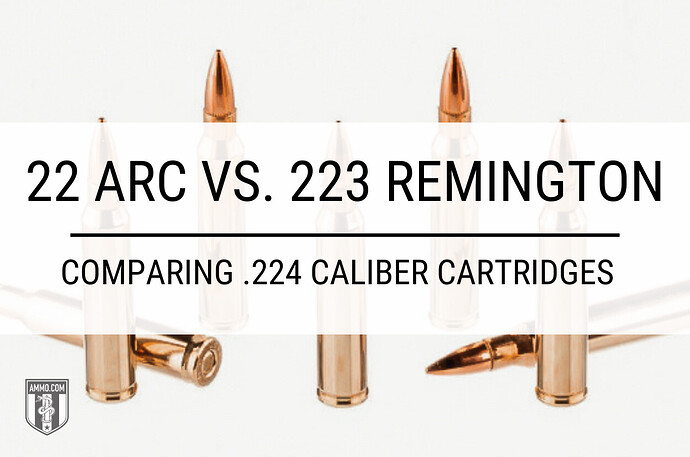The 22 Advanced Rifle Cartridge (22 ARC) and 223 Remington (223 Rem) are very similar rounds with a few distinct differences that make one the better choice for most applications.
We’ll compare the 22 ARC vs. 223 Rem in terms of real-world performance, including their recoil, trajectory, and suitability for hunting and defense, so you can decide which .22 caliber rifle cartridge better suits your needs.
Let’s start discussing the differences between the 223 Rem and 22 ARC!
What’s the Difference Between 22 ARC and 223?
The most significant difference you’ll notice between these two rounds is between their base diameters. The observant will also see the difference in their projectiles. Yes, both fire 0.224” diameter bullets, but that’s where the bullets’ similarities end.
We’ll begin with the differences in cartridge specs and continue with how they affect performance.
Cartridge Specifications
The 22 ARC is often thought to be based on the 6mm ARC, though its parent case is actually the 6.5 Grendel. It utilizes a 0.224” diameter bullet, and has a case with a neck diameter of 0.221”, base diameter of 0.441”, and length of 1.525”. The overall length is 2.260”, with a case capacity of 34.6 grains H2O and maximum pressure of 52,000 psi.
The .223 Remington descended from the .222 Remington parent case. It also fires a 0.224” diameter bullet. The case has a 0.253” neck diameter, 0.375” base diameter, 1.760” length, and capacity of 28.8 grains H2O (slightly less than the 22 ARC). At 55,000 psi, the 223 Rem has a higher max pressure than the 22 ARC.
Recoil: 22 ARC vs. 223 Rem
I always compare recoil because it’s one of the first things a new shooter asks: “How hard does it kick?” A cartridge with more recoil kicks the muzzle farther off the target with each shot, thus slowing follow-up shots. Strong recoil can also cause the shooter to flinch, which further worsens marksmanship. The less recoil you feel, the more accurately you can fire.
Both rounds have virtually non-existent recoil, but we’ll dive in to give you a better idea for each. I base my comparison on free recoil energy because unlike “felt recoil” it is objective. It’s a measure of recoil determined by four variables: projectile weight, propellant weight, muzzle velocity, and firearm weight.
When a 62 grain 223 Rem bullet is fired from an 8-pound rifle at 3,025 fps muzzle velocity, it generates about 4 ft-lbs of recoil energy.
When a 62 grain 22 ARC bullet is fired from an 8-pound rifle at 3,300 fps muzzle velocity, it generates about 2.5 ft-lbs of recoil energy.
While the 22 ARC technically has less recoil, the difference is so minuscule that most shooters won’t notice much difference. This section is a tie.
Continue reading 22 ARC vs. 223 Remington: Comparing .224 Caliber Cartridges on Ammo.com

